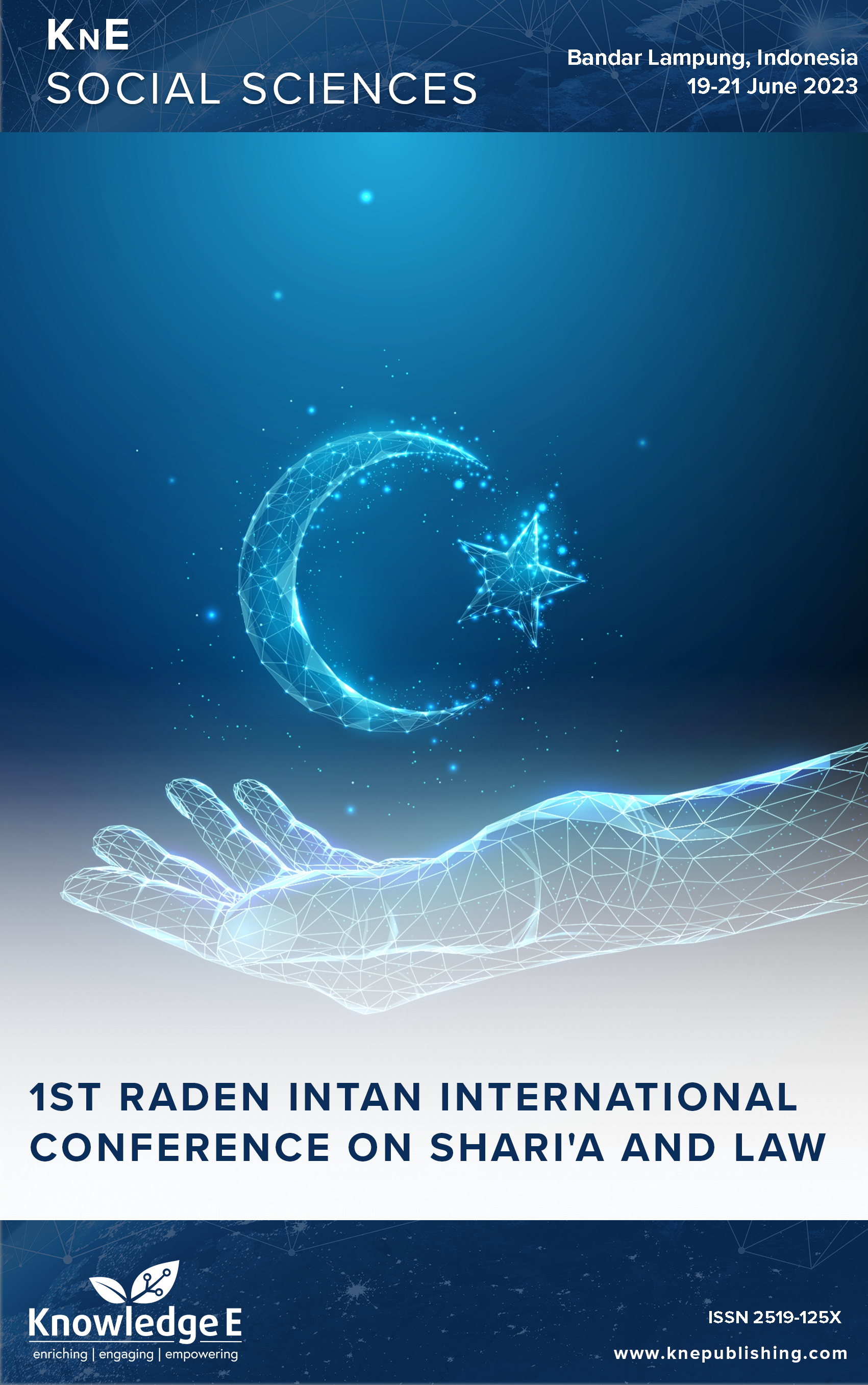Analysis of Decision of Surabaya State Court Number 916/Pdt.P/2022/PN. Sby on Interreligious Marriage Review of DUHAM Positive Law and Maqashid Shariah
DOI:
https://doi.org/10.18502/kss.v9i2.15015Abstract
Interfaith marriage is a new phenomenon that has surfaced in Indonesia with the circulation of court decisions that allow interfaith couples to marry, one of the most recent being the Surabaya court decision Number 916/Pdt.P/2022/PN.Sby. In his decision, he ordered the Department of Population and Civil Registry of the City of Surabaya to record interfaith marriages in the register. While the basis used by the plaintiff included, among others, Article 27 of the 1945 Constitution, Article 10 Paragraph 1 of Law Number 39 of 1999 concerning Human Rights, Jurisprudence. The main problem in this writing is the extent to which interfaith marriage arrangements are viewed from the United Nations Declaration of Human Rights (UDHR), Positive Law, and Islamic Law with the Maqasid Syari’ah approach. The writing method used is normative research with descriptive qualitative processing and analysis. The results of this study conclude that interfaith marriages are invalid by looking at the current conditions, referring to the Al-Qur’an Surah Al-Baqarah verse 221, Al-Mumtahanah verse 10, and Al-Maidah verse 5.
Keywords: analysis, court decision, interfaith marriage
References
Yunus M. Indonesian Arabic Dictionary, ( Jakarta: Foundation for Translating/ interpreting the Koran, 1973), p. 468
Amir Nuruddin and Azhar: Akmal Tarigan, Islamic Civil Law in Indonesia: A critical study of the development of Islamic Law and Jurisprudence, Law no. 1/1974 to KHI. Jakarta: Prenada Media; 2004. p. 38.
Syarifuddin A. Islamic Marriage Law in Indonesia; Between Fiqh Munakat and Marriage Law. Jakarta: Kencana; 2006. p. 35.
Abdurrahman Al-Jaziri, Fiqh ala Al-Madzahib Al-Arba’ah, (t.t : Dar al-Fikr, t.th), Juz. IV, page 2
See Article 2 Compilation of Islamic Law
Moh. Idris Ramulyo, Islamic Marriage Law an analysis of Law no. 1 of 1974 and compilation of Islamic Law. Jakarta: Bumi Aksara; 2004.
Moh. Idris Ramulyo, Islamic Marriage Law an analysis of Law no. 1 of 1974 and compilation of Islamic Law. Jakarta: Bumi Aksara; 2004.
Achmad Samsudin in Yani Trizakin. Background and Impact of divorce. Semarang: UNS; 2005. p. 74.
Ihromi TO. Anthology of family sociology. Jakarta: Torch Foundation; 2004. p. 137.
www.mpr.go.id (Thursday, 29 June 2023, accessed 18 July 2023)
https://www.republika.id/posts/37029/putusan-mk-nikah-beda-agama-tidak-sah
Eoh O, Marriagein I. Theory and practice. Jakarta: Sri Gunting; 1996. p. 9.
Law Number 1 of 1974 concerningMarriage [14] Sri Wahyuni (Faculty of Syari’ah UIN Sunan Kalijaga Yogyakarta) January-June 2014.
Trinaningsih M. Relevance of legal certainty in regulating interfaith marriage in Indonesia, the First Published. Bandung: CV Utomo; 2007. p. 64.
Zarkasy HF. “Rights and Religious Freedom” (in the perspective of Islam, UDHR and Indonesian), Paper presented at the National Workshop on the National Human Rights Commission, 10 years of Reform, Quo Vadis Promotion and Upholding of Human Rights in Indonesia, Hotel Borobudur, Jakarta 8- 11 July 2008, p. 1
Trinaningsih M. Relevance of legal certainty in regulating interfaith marriage in Indonesia, the First Published. Bandung: CV Utomo; 2007. p. 82.
([1]) every man and woman, without discrimination on race, nationality or religion, has the right to marry and establish a household. They have the same rights during and after marriage.( ) Marriage must be carried out freely and with the consent of both parties.
Encyclopedia of Islamic Law, PT Ichtiar Baru Van Hoeve, Jakarta, p. 1109
www.google.com. Maqasid Al Syariah.htm accessed on 07 March 2023
Daruriyyat (primary needs) are the main needs that must be protected and maintained as well as possible by Islamic law so that the benefit of human life is truly realized.
Hajjiyat (secondary needs) are the needs needed to achieve primary needs such as examples of independence, equality and so on
Tahsiniyyat (tertiary needs) are the needs of human life apart from those primary and secondary characteristics that need to be held and maintained for the good of human life in society, such as examples of clothing, food and shelter and others.
Moh. Daud Ali. Introduction to Islamic Law and Legal Studies in Indonesia, Ctk. Sixth, PT. Raja Grafindo Utama, Jakarta, 1998, p. 61-62
Moh. Daud Ali. Introduction to Islamic Law and Legal Studies in Indonesia, Ctk. Sixth, PT. Raja Grafindo Utama, Jakarta, 1998, p. 61-62
Moh. Daud Ali. Introduction to Islamic Law and Legal Studies in Indonesia, Ctk. Sixth, PT. Jakarta: Raja Grafindo Utama; 1998. p. 63.
Translation of Al Quran Surah Al, third copy. Yogyakarta: UII Press; 2004. p. 502.
Translation of Al Quran Surah Al Maidah verse 90, third copy. Yogyakarta: UII Press; 2004. pp. 214–5.
Translation of Al Quran third copy. Yogyakarta: UII Press; 2004. p. 144.
In the Compilation of Islamic Law, marriage aims to create a household life that is sakinah, mawaddah and rahmah. Not much different from what is regulated in the Basic Marriage Law, namely Law Number 1 of 1974, the purpose of marriage is to form a happy and eternal family (household) based on Belief in One Almighty God.
Karsayuda M. Interfaith Marriage Measuring the Values of Justice Compilation of Islamic Law, Ctk. Total Media (Yogyakarta): First; 2006. p. 90.
Anshori AG, Harahab Y. Dynamics of Islamic law and its development in Indonesia, Ctk. First. Yogyakarta: Kreasi Total Media; 2008. p. 31.

